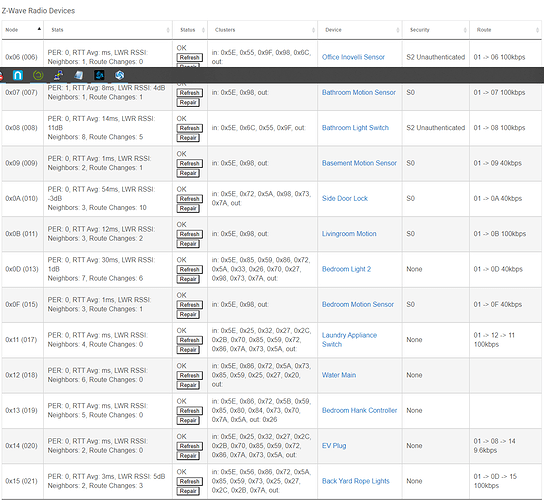Looks like they all have something, but some don't have anything listed for out.
I took my own advice and removed that bulb that I thought was causing the issues, and unscrewed it from the socket. So far, things seem better, but I'm also running my refresh automation on a loop. I'll go stop that now and see if stuff breaks.


